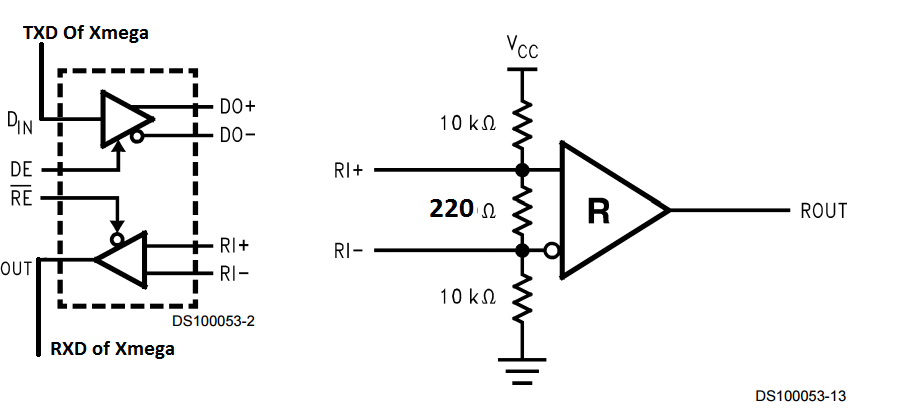Hello,
I want to use DS90LV019 as a transceiver between a LVDS device and ATXmega USART, which is a 3.3V device. I have enabled the Xmega Pull-Up resistor on RX pin, but still receiving unexpected data due to noise or crosstalk. Will be great if you can inform me about any required passive components on Ro pin.
Thank you,
Nikoo


